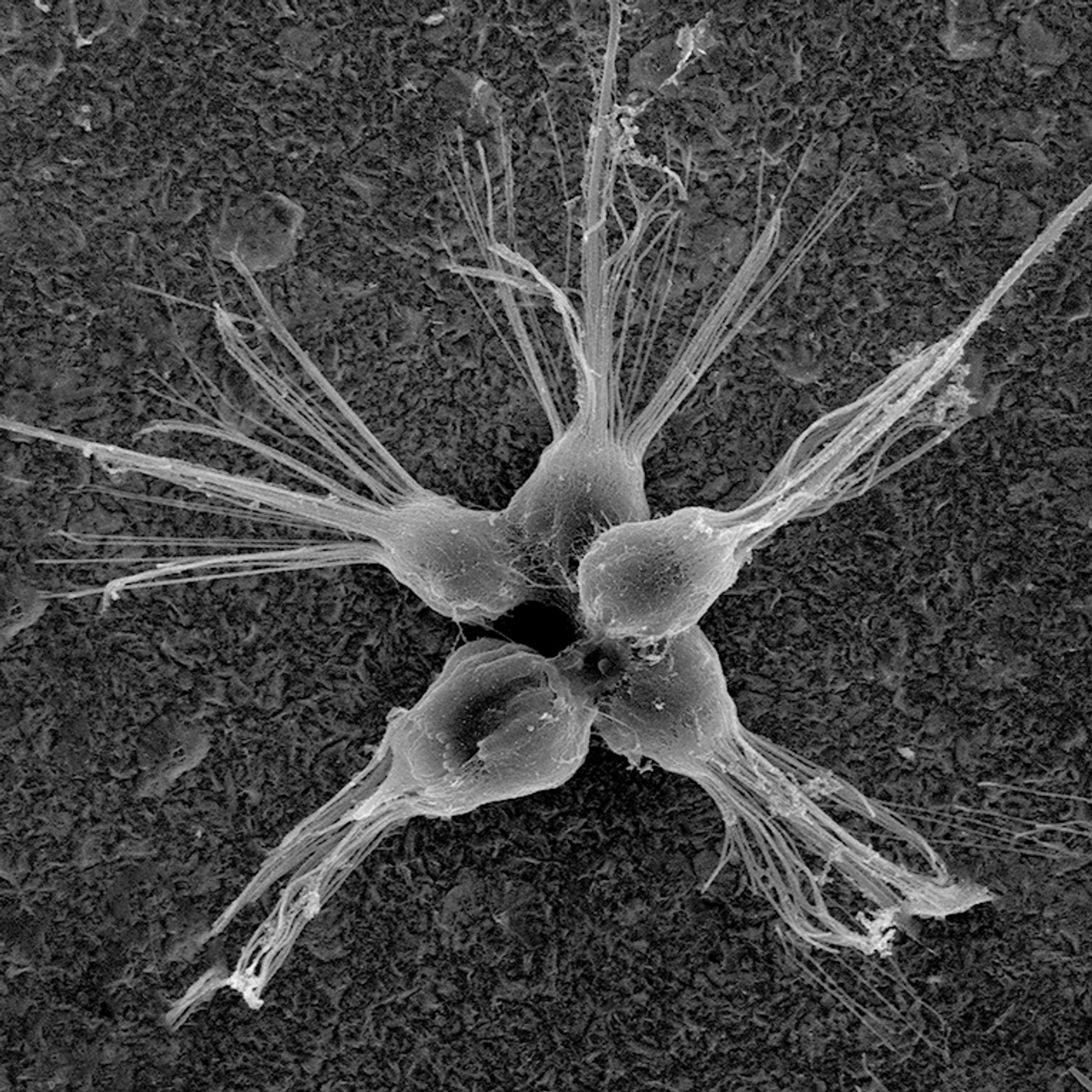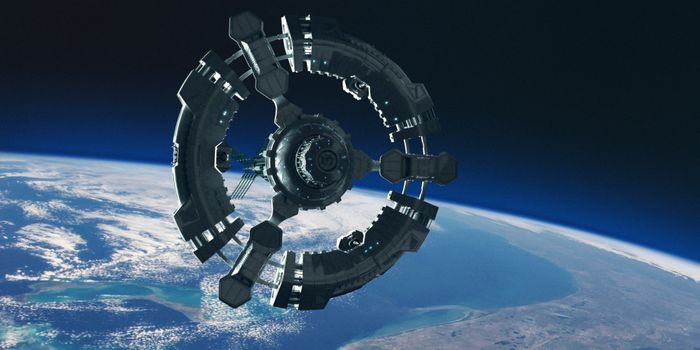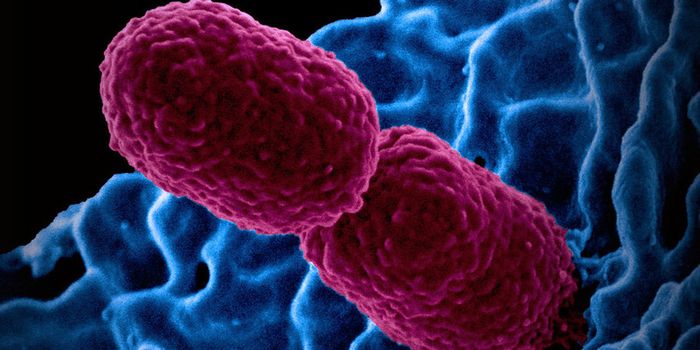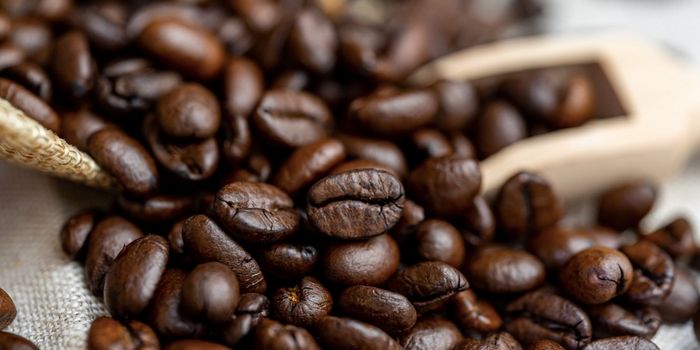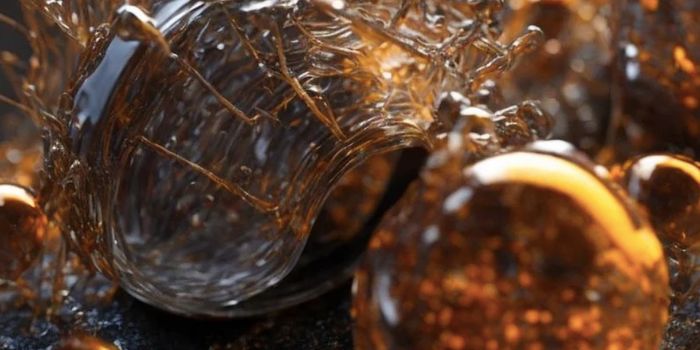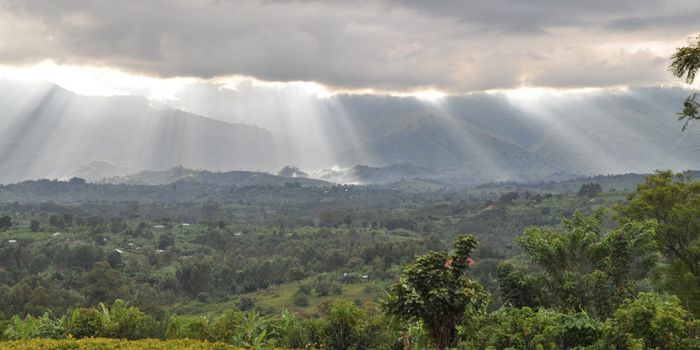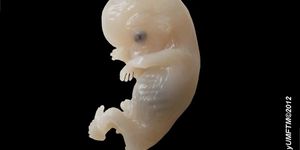Better Know a Microbe: Choanoflagellates
I always jump at the chance to learn about a new microbe, and I’ve got a soft spot for protists - you know, the little guys that live in pond scum.
Recently, I ran across a group of protists called the choanoflagellates. While their basic biology is pretty cool, they’re also considered to be the closest living unicellular relatives to animals!
Image: www.dayel.com
There are roughly 125 extant species of choanoflagellates, swimming about in nearly every aquatic environment on our planet. Because they’re protists, they’re unicellular eukaryotes. These particular protists are free-living (although some do form colonies), oval-shaped, and they use a flagellum to swim. They also have a funnel-shaped collar at the base of their flagellum. When the flagellum rotates, water gets pulled across the collar, trapping bacteria and other yummy foodstuffs.
According to one report, “there can be thousands to millions of choanoflagellates in a gallon of sea water, which may filter 10 to 25 percent of coastal surface water per day. Choanoflagellates in turn serve as food for planktonic animals like crustacean larvae, which are consumed by larger animals, and so on up the food chain.”
Some of these little guys even build an exoskeleton made of silica called a lorica, sort of like a little mobile home - and I guarantee it’s the coolest thing you’ll see today. One group, the Acanthoecidae Norris, forms a basket-shaped lorica. The lorica seems to provide control and stability while swimming - things can get rough out in the big ocean.
Some choanoflagellates also form rather impressive colonies. Actually, Salpingoeca rosetta can differentiate into five different forms - slow swimmers, fast swimmers, thecate cells, rosette colonies, and chain colonies. In rosette colonies, the base of each cell is directed toward a center point, with the flagellum pointing outward. Chain colonies are made up of linear rows of cells - both rosette and chain colonies are free-swimming.
In contrast, thecate cells attach themselves to a solid surface with a stalk. These cells form when fast swimmer cells come to rest on a surface. Slow swimmers resemble thecate cells, but fast swimmers are missing their feeding collar.
S. rosetta colonies also have features of simple multicellular organisms, making it a model for studying the rise of multicellular life. In fact, evolutionary biologists consider choanoflagellates to be the closest living unicellular relatives of animals. For example, the French biologist Felix Dujardin was the first to propose a relationship between the choanoflagellates and the sponge cells called choanocytes (because the two cells look pretty darn similar).
According to one source, “the close kinship between choanoflagellates and animals means that there once lived a single-celled ancestor that gave rise to two lines of evolution — one leading to the living choanoflagellates and the other to animals.”
The similarities aren’t just skin deep. One study (Lavrov 2005) compared mitochondrial genome sequences to show that choanoflagellates are an outgroup of the metazoans, not a descendent. Likewise, choanoflagellates have homologues of metazoan cell adhesion and signaling genes.
Next time you run into a bit of pond scum, remember to say hi to the choanoflagellates!
Sources: Developmental Biology, The New York Times, Current Biology, Molecular Biology and Evolution, Proceedings of the Royal Society B, Wikipedia
